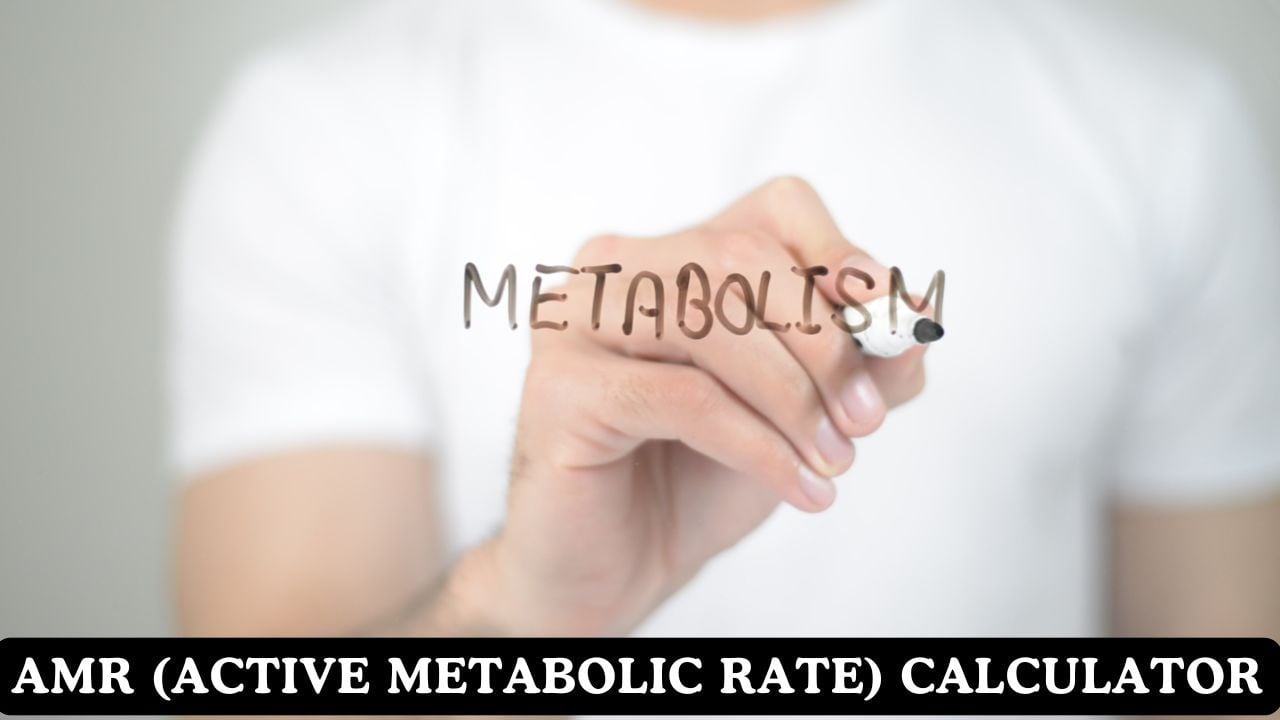AMR Calculator
Calculate your Active Metabolic Rate and total daily energy expenditure

What is Active Metabolic Rate (AMR)?
Active Metabolic Rate (AMR) represents the total energy expenditure of an organism during periods of activity, encompassing both basal metabolic functions and the additional energy required for physical activities. According to research published in PubMed studies, AMR is calculated as BMR × Activity Factor and provides a comprehensive measure of daily energy requirements.
Unlike simple BMR calculations, AMR accounts for the complete metabolic picture including exercise, non-exercise activity thermogenesis (NEAT), and the thermic effect of food. This makes AMR particularly valuable for athletes, active individuals, and anyone seeking precise energy balance management.
AMR vs Standard Metabolic Rate
The relationship between AMR and Standard Metabolic Rate provides insight into metabolic flexibility and energy allocation. Research indicates that metabolic scope (AMR – SMR) varies significantly based on fitness level, age, and activity patterns.
This difference represents the energy available for physical activities beyond basic physiological functions. Higher metabolic scope indicates greater capacity for sustained physical activity and improved metabolic health. Calculate your baseline needs with our BMR calculator to understand this relationship better.
Clinical Applications of AMR
AMR calculations are essential for sports nutrition, weight management, and metabolic health assessment. Clinical research demonstrates that accurate AMR assessment improves outcomes in athletic performance optimization, weight loss interventions, and metabolic disorder management.
Healthcare professionals use AMR data to design personalized nutrition plans, optimize training loads, and assess metabolic health status. For comprehensive metabolic assessment, combine AMR calculations with our TDEE calculator for detailed energy expenditure analysis.
Factors Influencing AMR
Multiple factors influence AMR including body composition, training status, environmental conditions, and genetic factors. Age-related changes in muscle mass significantly impact AMR, with research showing 2-3% annual decreases after age 30 without intervention.
Environmental factors such as temperature, altitude, humidity, and seasonal light exposure can alter AMR by 3-10%. Understanding these variables helps optimize energy intake for different conditions and goals. Monitor your body composition changes with our body fat calculator to track AMR-related changes over time.
AMR Calculation Methods & Activity Levels
| Activity Level | Multiplier | Description | Examples | Energy Expenditure |
|---|---|---|---|---|
| Sedentary | 1.2 | Minimal physical activity | Desk work, light walking | BMR + 20% |
| Lightly Active | 1.375 | Light exercise 1-3 days/week | Walking, light gym sessions | BMR + 37.5% |
| Moderately Active | 1.55 | Moderate exercise 3-5 days/week | Regular training, sports | BMR + 55% |
| Very Active | 1.725 | Hard exercise 6-7 days/week | Intense training, competition | BMR + 72.5% |
| Extremely Active | 1.9 | Very hard exercise + physical job | Professional athletes, manual labor | BMR + 90% |
Basic Formula: AMR = BMR × Activity Factor. The activity factor accounts for all energy expenditure beyond basal metabolic needs, including planned exercise, daily activities, and non-exercise activity thermogenesis (NEAT).

Manish is a NASM-certified fitness and nutrition coach with over 10 years of experience in weight lifting and fat loss fitness coaching. He specializes in gym-based training and has a lot of knowledge about exercise, lifting technique, biomechanics, and more.
Through “Fit Life Regime,” he generously shares the insights he’s gained over a decade in the field. His goal is to equip others with the knowledge to start their own fitness journey.
